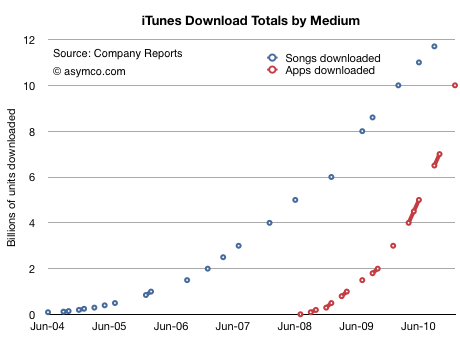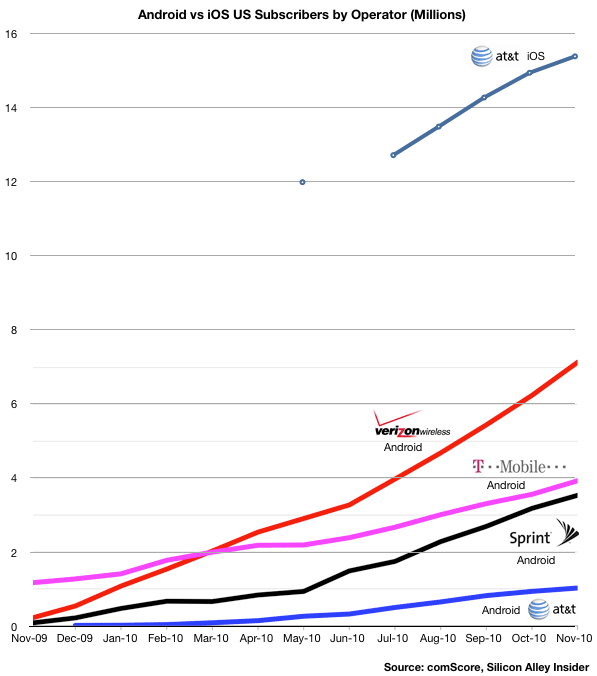The last analysis of the iTunes content store showed amazing acceleration in download rates. Since we know something about the pricing of apps in aggregate, we can make some guesses about the income from apps for both Apple and suppliers.
The key assumptions are:
- Average selling price per app $0.29 (as reported in June 2010 here).
- Price per song $.99 increasing to $1.05 over time
- Music gross margin 10%
- App gross margin 30%
The first chart shows the accumulated payments made to suppliers of content to the iTunes store over time. Continue reading “iTunes has paid over $2 billion to app developers and $12 billion to record labels”


